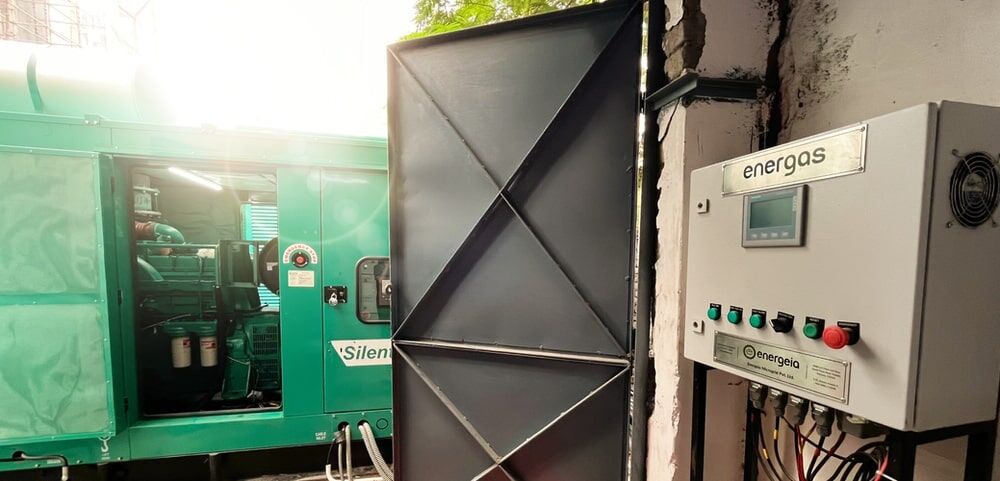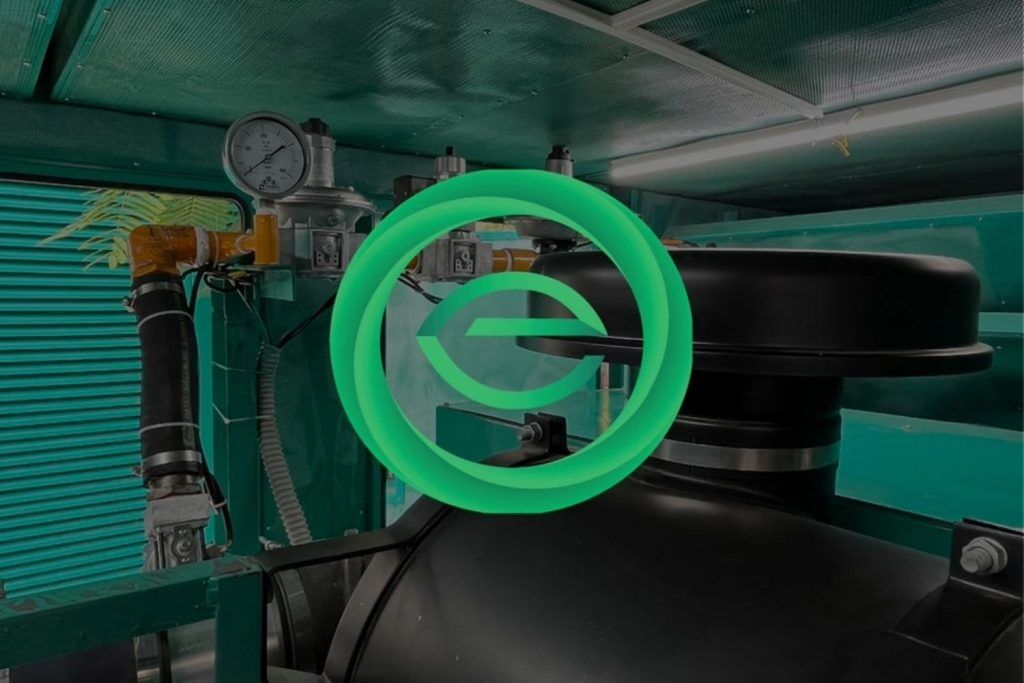Welcome to ‘Clearing the Air,’ a series where we uncover the often-overlooked role of industrial utilities in air pollution
We’ll dive into how everyday systems – diesel generators, air compressors, chillers, boilers – are silently contributing to India’s air quality challenges.
Our goal? To arm you with reliable knowledge and actionable insights about how to play your part in creating a world where our families can finally stop coughing!
Utility in Focus: Diesel Generators
Let’s talk about something you might not think about often, but plays a big role in the air we breathe – diesel generators. In India, these generators are more than just backup power sources; they’re actually a key player in the air pollution problem.
Diesel generators’ contribution to India’s air pollution problem
According to the Centre for Science and Environment (CSE), diesel generators contribute a significant chunk – between 7% and 18% – of air pollution in cities that haven’t met the National Ambient Air Quality Standards for over 5 years.
But here’s something even more eye-opening: as these diesel generators age, they begin to operate poorly, emitting up to 11 times more pollutants than what is deemed acceptable for new generators.
To add fuel to the fire (literally), about 50% of the particulate matter and sulphur dioxide in the air comes from the burning of fuel from diesel generators. That’s what makes the air we’re breathing today toxic and harmful for our health.
What’s the Indian Government doing about this?
Recognizing this issue, the National Clean Air Programme pointed out that a good 18% of city pollution comes from these stationary diesel generators. This has nudged State Governments to adopt policies to phase out generators run only on diesel.
Plus, in 2017, the Supreme Court of India stepped in too. They placed a ban on diesel generators during the winter months, when pollution is at its worst. All these actions underline just how much diesel generators contribute to air pollution in India.

How can we reduce these DG-caused GHG emissions?
To reduce the greenhouse gas emissions (GHG) caused by diesel generators, energy-intensive industries and commercial facilities can implement 2 retrofit solutions on their diesel generators:
- Dual Fuel Kits
- RECDs (Retrofit Emission Control Devices)
In this post, we will dive into the first and most commonly-used solution — Dual Fuel Kits.
Dual Fuel Kits
What is a Dual Fuel Kit?
The Dual Fuel Kit is an innovative technology that allows operators of heavy-duty diesel engines to reduce operational costs and lower emissions by substituting diesel fuel with cleaner-burning natural gas.
The system, comprised of patented technologies, enables engines to safely operate on gas percentages up to 70% of the total fuel requirement, while maintaining diesel-like performance in efficiency, stability, and load acceptance.

How much can I reduce my GHG emissions using a dual fuel kit?
The specific percentage of GHG emissions reduction achieved by installing a dual fuel kit on a diesel generator can vary based on the type of fuel used, the quality of the gas, and the operational characteristics of the generator.
However, the use of dual fuel kits in India has been shown to significantly contribute to the reduction of GHG emissions associated with diesel generators, with an average reduction of 50% to 60%.
This is due to the ability of dual fuel systems to displace a significant portion of diesel fuel with cleaner-burning natural gas, leading to a reduction in emissions such as NOx (up to 60%), COx (up to 10%), and PM (up to 50%).
How much money can I save by using a dual fuel kit?
The potential cost savings in fuel, maintenance, and operational efficiency that can be unlocked by installing a dual fuel kit on a large diesel generator in India include:
- Fuel Cost Savings: Dual fuel kits allow the generator to run on both gas and diesel, optimizing cost efficiency based on fuel prices and availability. This adaptability can lead to reduced diesel consumption, as gas is generally cheaper than diesel, resulting in significant fuel cost savings.
- Maintenance Cost Savings: Dual fuel engines typically have fewer moving components, leading to lower maintenance costs compared to traditional diesel engines. This results in reduced maintenance expenses over the operational life of the generator.
- Operational Efficiency: The use of dual fuel technology can lead to improved operational efficiency, as it allows for higher specific power output compared to gas-only engines. This results in overall operational cost savings and increased productivity.
Overall, the installation of a dual fuel kit can lead to substantial cost savings in fuel, maintenance, and operational efficiency, making it a compelling option for businesses seeking to optimize the performance and cost-effectiveness of their diesel generators.
What are the factors to consider when deciding whether to install a dual fuel kit?

When deciding whether to install a dual fuel kit for a diesel generator in India, several factors should be considered:
- Cost Efficiency: Dual fuel kits allow the generator to run on both gas and diesel, optimizing cost efficiency based on fuel prices and availability. This adaptability can lead to significant fuel cost savings, as gas is generally cheaper than diesel.
- Maintenance Cost Savings: Dual fuel engines typically have fewer moving components, leading to lower maintenance costs compared to traditional diesel engines. This can result in reduced maintenance expenses over the operational life of the generator.
- Operational Flexibility: The ability to switch between gas and diesel modes based on fuel availability or other operational considerations provides operational flexibility, ensuring continuous power supply.
- Environmental Impact: Dual fuel systems can help reduce the carbon footprint by allowing the generator to operate on cleaner-burning natural gas, leading to a reduction in carbon emissions compared to running solely on diesel.
- Specific Power Output: Dual fuel engines can offer higher specific power output compared to gas-only engines, contributing to operational efficiency and potential cost savings.
- Capital and Conversion Costs: Consideration should be given to the initial capital cost of the dual fuel kit and the conversion process, as well as the potential for long-term cost savings and return on investment.
- Fuel Availability and Quality: The availability and quality of the gas fuel source should be assessed to ensure reliable and efficient operation of the dual fuel system.
By evaluating these factors, businesses can make informed decisions about whether to install a dual fuel kit for their diesel generators, taking into account the potential cost savings, operational benefits, and environmental impact.
Conclusion
In a nutshell, diesel generators in India are major culprits when it comes to the air pollution crisis. As these generators get older, they become even more troublesome, emitting pollutants at levels far beyond what’s considered acceptable.
The impact of these generators on our air quality is no joke. About 1/2 of the particulate matter and sulfur dioxide in the air comes from them.
To significantly reduce DG-caused emissions and unlock some serious cost savings, Dual Fuel Kits can be retrofitted on existing DGs to curb this crisis.
It’s a win-win situation for your pocket and the planet.
It’s time to clear the air and breathe easy!
Prefer a more visual summary? Check out our infographic below –








